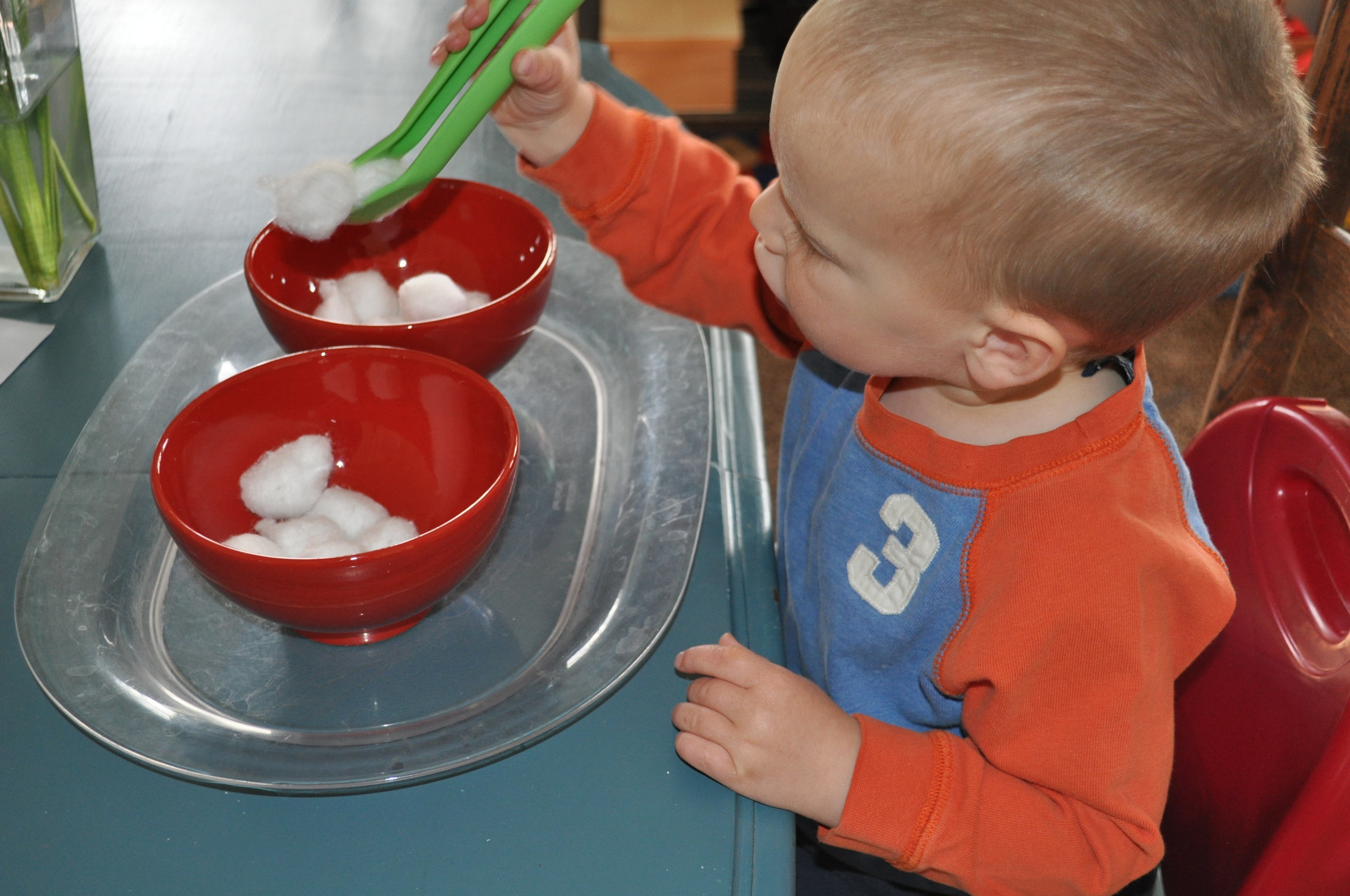One of the subject areas in the Montessori classroom is practical life. These activities, if it’s not already obvious, are all somehow related to real-life, everyday tasks.Practical life activities are not just for learning everyday tasks. They also help with gross and fine motor skills, which include prerequisite movements for writing and even reading (left to right motions). Kids just think they’re fun!
Transferring includes a pretty broad range of activities and you can find lots and lots of variations online. For the youngest ones (even as young as 18 months) you would start with big objects like beans (or even pom poms or cotton balls) and a big spoon or scoop. You have to try things out and see what works for your child. I originally thought a scoop would be easier for my youngest to deal with, but the motion of using a scoop is actually more complicated than just a regular spoon.
When presenting the activity, start with objects in a bowl (or other container) on the left and an empty bowl on the right. Sit to the left of your child. Carefully and slowly with a look of interest and concentration, scoop beans onto the spoon, carefully place the spoon over the empty bowl and pour the beans in. Do this until you’re finished or until your child wants to try. When the bowl is empty, you can either encourage your child to turn the tray so that the full bowl is on the left again, or not. I have seen it both ways. My kids didn’t really like the turning and it seemed to over-complicate the activity, so I ditched it.
If beans are spilled (it is good for you to spill some on purpose during the presentation), point it out to your child and then slowly pick up one at a time using pincer grasp (thumb and forefinger) and put them in the bowl.
A note about trays: In a Montessori environment each practical life activity (as well as some other types of activities) is usually kept on a nice-looking tray. It makes it easy for the child to choose it and take it to her workspace. You can find trays at dollar stores and thrift stores. You can also make use of large plastic food storage containers or even small cardboard boxes. Everything is supposed to be attractive, but sometimes you just need to work with what you have!
As your child gets adept at one combination of objects/tool/container, you can switch it up and make it a bit more challenging. You want it to be the right amount of challenging so that your child is neither bored or frustrated. Just watch your child to see.
Here are some more ideas:
Objects: rice, barley, other grains, marbles, little erasers, beads, pebbles, water beads
Tools: big serving spoon, teaspoon, coffee scoop, Japanese soup spoon, big tongs, little tongs, tweezers
Containers: cereal bowls, clear glass bowls, tea cups, ice cube trays (one object in each section)
Notes: Keep close supervision of children who still put things in their mouths!! I let my children transfer beans at about 18 months, but I was always watching and made sure they weren’t putting the beans in their mouths. You also have to demonstrate (by example) how to properly handle breakable objects. Montessori believed that children could be careful with delicate objects and intentionally had them in the classroom and available to the children. They just need to be shown how to carefully handle breakable things. That said, my son did break a bowl while transferring one time, but I wasn’t paying close attention and he was just messing around by that point.


